Posts Tagged ‘hip hop’
Wednesday, August 13th, 2025
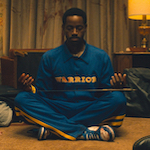 I don’t know much about Oakland, but FREAKY TALES seems designed to be the Oakland-est movie of all time. So Oakland that Too $hort is the narrator and one of the producers and has a cameo as a cop and is a character in the movie played by rapper Demario “Symba” Driver. Also they have a cool retro synth type score but they got Raphael Saadiq to do it.
I don’t know much about Oakland, but FREAKY TALES seems designed to be the Oakland-est movie of all time. So Oakland that Too $hort is the narrator and one of the producers and has a cameo as a cop and is a character in the movie played by rapper Demario “Symba” Driver. Also they have a cool retro synth type score but they got Raphael Saadiq to do it.
It’s presented as an anthology film, but it’s the type where each of the stories intersects a little bit and ultimately becomes one story in the last chapter – actually not that far off from the structure of WEAPONS, which I watched the day after I watched this. What it made me keep thinking of though is the made-for-cable movie COSMIC SLOP, even though this is pretty different and definitely way better. I guess just because it’s weird stories hosted by a music icon and named after one of his works.
Although there’s a sci-fi element in a stylishly fake looking “cosmic green stuff” that pops up occasionally (Short Dog figures it “was just one of those freaky things that made the Bay Area so damn fresh” at the time) I think it comes closest to being a crime movie. There’s a hitman, a corrupt cop, and everything revolves around a botched robbery of Golden State Warriors point guard Sleepy Floyd (Jay Ellis, TOP GUN: MAVERICK). I of course enjoy that type of story, but the standout chapters for me are the two about circa ’87 Bay Area music scenes, following some punk rockers and then a female rap duo, each group having a fateful incident after leaving the same showing of THE LOST BOYS. (read the rest of this shit…)
Tags: Angus Cloud, Anna Boden, anthologies, Ben Mendelsohn, Dominique Thorne, hip hop, Jack Champion, James Newman, Jay Ellis, Ji-young Yoo, Marshawn Lynch, Oakland, Pedro Pascal, punk, Raphael Saddiq, Ron Yuan, Ryan Fleck, Too Short
Posted in Reviews, Crime, Science Fiction and Space Shit | 12 Comments »
Tuesday, July 29th, 2025
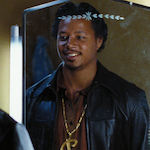
If you’re keeping track, please add HUSTLE & FLOW to the list of summer ’05 movies that hold the fuck up. Maybe at the top. I think this is the first time I’ve seen it since the theater, and I wasn’t sure if I was building it up in my memory. No, this is really something special.
 It takes place in Memphis, where small time pimp and weed dealer DJay (Terrence Howard, WHO’S THE MAN?) revives an old dream to become a rapper. It kinda happens by coincidence. First one of his customers (Claude Phillips) insists on trading him a Casio keyboard for drugs (“What am I, a pawn shop?”), which gets him thinking about playing music. Then he runs into Key (Anthony Anderson, URBAN LEGENDS: FINAL CUT), who he knew in middle school, at a convenience store, has a conversation and ends up going to watch him record a singer at a church. If DJay had shown up five minutes later or if Key hadn’t needed batteries none of this would’ve happened. But they do, so DJay later shows up at Key’s house, raps for him and convinces him to come over and help him record a demo tape. (read the rest of this shit…)
It takes place in Memphis, where small time pimp and weed dealer DJay (Terrence Howard, WHO’S THE MAN?) revives an old dream to become a rapper. It kinda happens by coincidence. First one of his customers (Claude Phillips) insists on trading him a Casio keyboard for drugs (“What am I, a pawn shop?”), which gets him thinking about playing music. Then he runs into Key (Anthony Anderson, URBAN LEGENDS: FINAL CUT), who he knew in middle school, at a convenience store, has a conversation and ends up going to watch him record a singer at a church. If DJay had shown up five minutes later or if Key hadn’t needed batteries none of this would’ve happened. But they do, so DJay later shows up at Key’s house, raps for him and convinces him to come over and help him record a demo tape. (read the rest of this shit…)
Tags: Anthony Anderson, Craig Brewer, DJ Qualls, Elise Neal, hip hop, Memphis, Paula Jai Parker, Screen Actor's Guild Award Winner Chris "Ludacris" Bridges, Taraji P. Henson, Terrence Howard
Posted in Reviews, Drama, Music | 10 Comments »
Thursday, November 14th, 2024
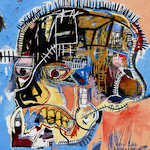 A couple months ago I got on a Jean-Michel Basquiat kick. You probly know who that is, but if not, he was a New York City graffiti artist in the early hip hop era, transferred his skills to paintings for galleries, became rich and famous and friends with Andy Warhol and stuff in a brief, prolific life before (like so many bright lights) dying of a drug overdose at 27.
A couple months ago I got on a Jean-Michel Basquiat kick. You probly know who that is, but if not, he was a New York City graffiti artist in the early hip hop era, transferred his skills to paintings for galleries, became rich and famous and friends with Andy Warhol and stuff in a brief, prolific life before (like so many bright lights) dying of a drug overdose at 27.
Set aside the inspirational underdog story, the meteoric rise, the quirky details, the tragic ending. All interesting, but you don’t need any context for his art to be incredible. Labelled a “neo-expressionist,” he just has this lively, messy style, an explosion of scratches and scrapes and colors and doodles and words. If they are child-like, then the child in question must’ve remained young for 100 years, evolving his drawing into highly sophisticated crudeness. There are traces of influences from cartoons to African art, he sometimes references boxers and current events and social issues, but he translates it into these distinctive scribbles and cryptic/poetic phrases, sculpting beauty and humor from garbage and decay and vandalism. I don’t know of anybody quite like him, and lately (even before… you know) I’ve really been feeling it’s important to honor and glorify the true originals and pure artists among us, through my chosen medium of, uh, movie reviews. So here I am, glorifying Jean-Michel Basquiat. (read the rest of this shit…)
Tags: Amos Poe, Andy Warhol, Anne Carlisle, Becky Johnston, Benicio Del Toro, Christopher Walken, Claire Forlani, Courtney Love, David Bowie, Debbie Harry, Dennis Hopper, Edo Bertoglio, Elina Lowensohn, Eszter Balint, Fab 5 Freddy, Gary Oldman, Glenn O'Brien, graffiti, hip hop, Hope Clarke, Jean-Claude La Marre, Jean-Michel Basquiat, Jeffrey Wright, John Lurie, Julian Schnabel, Lee Quinones, Michael Holman, Michael Wincott, New York City, Parker Posey, Paul Bartel, Rockets Redglare, Saul Williams, Tamra Davis, Tatum O'Neal, Vincent Gallo
Posted in Reviews, Documentary, Drama | 10 Comments »
Wednesday, May 11th, 2022
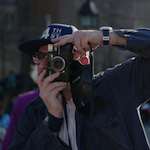
 RICKY POWELL: THE INDIVIDUALIST is a 2020 documentary about the late New York City photographer/scenester who documented the golden age of hip hop and the ‘80s New York City art scene. Most of us know of him because of a line in a Beastie Boys song – he grew up with Ad Rock and went with them on their tours for around a decade, hanging out and taking photos. He also took many famous pictures of Run DMC, LL Cool J and Public Enemy.
RICKY POWELL: THE INDIVIDUALIST is a 2020 documentary about the late New York City photographer/scenester who documented the golden age of hip hop and the ‘80s New York City art scene. Most of us know of him because of a line in a Beastie Boys song – he grew up with Ad Rock and went with them on their tours for around a decade, hanging out and taking photos. He also took many famous pictures of Run DMC, LL Cool J and Public Enemy.
And it was more than that. He just lived in an interesting place and time, and knew a ton of people who went on to do big things, who were comfortable with him and let him take candid photos of them. Club kids, actors, graffiti artists. Some of his old friends are interviewed in the movie: Natasha Lyonne, Debi Mazar, Fab 5 Freddy, Laurence Fishburne, the graffiti writer Zephyr. (read the rest of this shit…)
Tags: Beastie Boys, Debi Mazar, Fab 5 Freddy, hip hop, Josh Swade, Laurence Fishburne, Max Perlich, New York City, photography, Ricky Powell, Run DMC, Vin Diesel
Posted in Documentary, Music, Reviews | 9 Comments »
Thursday, January 21st, 2021
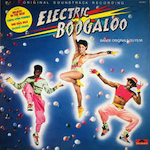 “In the second film the wardrobe people wanted to go glamorous. And they wanted to make Los Angeles look beautiful – that’s why all the colors are bright and friendly. Los Angeles is not like that – they made BREAKIN’ 2 as some kind of a WIZARD OF OZ of dance. And you know what? For a kid that never had anything, not even the money in the family to go to Disneyland – suddenly people were screaming, and cheering, dancing and being happy on the screen. That’s the fantasy. Maybe Los Angeles will never be that way, but Los Angeles was beautiful for one day when people watched BREAKIN’ 2. I think that’s nice.” -Michael “Boogaloo Shrimp” Chambers to Marco Siedelmann in the book Stories From the Trenches: Adventures in Making High Octane Hollywood Movies With Cannon Veteran Sam Firstenberg
“In the second film the wardrobe people wanted to go glamorous. And they wanted to make Los Angeles look beautiful – that’s why all the colors are bright and friendly. Los Angeles is not like that – they made BREAKIN’ 2 as some kind of a WIZARD OF OZ of dance. And you know what? For a kid that never had anything, not even the money in the family to go to Disneyland – suddenly people were screaming, and cheering, dancing and being happy on the screen. That’s the fantasy. Maybe Los Angeles will never be that way, but Los Angeles was beautiful for one day when people watched BREAKIN’ 2. I think that’s nice.” -Michael “Boogaloo Shrimp” Chambers to Marco Siedelmann in the book Stories From the Trenches: Adventures in Making High Octane Hollywood Movies With Cannon Veteran Sam Firstenberg
BREAKIN’ was a huge hit for Cannon. It opened at #1 even though it was going head-to-head with Universal’s SIXTEEN CANDLES, and on almost 200 fewer screens. It ended up making $38 million, which was more than twice BEAT STREET’s total, and put it at #17 in the 1984 box office rankings, above such films as BACHELOR PARTY, RED DAWN, THE TERMINATOR and Cannon’s own MISSING IN ACTION. And if you scan down that list, way down to #102, you’ll find BREAKIN’ 2: ELECTRIC BOOGALOO.
That sounds more disastrous than it is, because only its first ten days of release were in 1984; its eventual total would’ve put it around #59. More notable than the sequel’s lower box office take is the fact that they got it into theaters less than 8 months later. But it wasn’t just a continuation – they put together a new team of filmmakers, headed by director Sam Firstenberg, who had just directed Dickey in NINJA III: THE DOMINATION (also released in ’84!), and they gave it a goofier, less reality-bound tone and style with more neon and rainbow colors in the clothes and graffiti. (read the rest of this shit…)
Tags: Boogaloo Shrimp, breakdancing, Cannon Films, dancing, Harry Caesar, Herb Mitchell, hip hop, Ice-T, Lela Rochon, Martika, Nicholas Segal, Peter MacLean, Sam Firstenberg, Shabba Doo
Posted in Reviews, Musical | 28 Comments »
Wednesday, January 20th, 2021
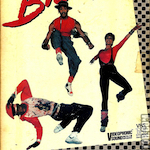 I’ve written about a bunch of these corny 21st century dance movies, and I always seem to be comparing them to the BREAKIN’ movies, but I’ve never actually reviewed the BREAKIN’ movies. That ends now. I’m reviewing the BREAKIN’ movies. The world could use more focus on the BREAKIN’ movies right now.
I’ve written about a bunch of these corny 21st century dance movies, and I always seem to be comparing them to the BREAKIN’ movies, but I’ve never actually reviewed the BREAKIN’ movies. That ends now. I’m reviewing the BREAKIN’ movies. The world could use more focus on the BREAKIN’ movies right now.
In a certain way, BREAKIN’ changed the whole world for me. I’m pretty sure it was BREAKIN’ and/or the cultural conversation around BREAKIN’ that first opened my eyes to this movement of music, art and dancing that older, cooler kids in far away New York had been building for several years. If you weren’t alive then I’m not sure you can imagine what a phenomenon it was. I remember a music teacher giving us diagrams of moves, trying to teach us (what she said was) the moonwalk, talking about Michael Jackson being inspired by breakdancers and breakdancers being inspired by James Brown. It was the music part of hip hop culture that would become important to me, and (as I said in my review of the companion movie RAPPIN’), at that time I don’t think I even knew the word “rap.” I called it “breakdancing music.” (And, though I kind of like this soundtrack, I don’t associate it much with the type of rap I soon fell in love with.) (read the rest of this shit…)
Tags: Ben Lokey, Boogaloo Shrimp, breakdancing, Cannon Films, Christopher McDonald, dancing, hip hop, Ice-T, JCVD, Joel Silberg, Lucinda Dickey, Michel Qissi, Shabba Doo, Teresa Laughlin, Venice Beach
Posted in Drama, Music, Reviews | 9 Comments »
Thursday, May 21st, 2020
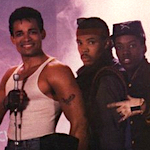 May 10, 1985
May 10, 1985
As I might’ve told you before, I’ve got a soft spot for the hip hop movies of the ‘80s. None are exactly great films, and most are made by people who could’ve just as easily been doing one about BMX or video game competitions or something. WILD STYLE is one of the few that could be argued to genuinely come out of the hip hop culture, and I never saw that until I was older. But BREAKIN’, BREAKIN’ 2 and the more legit BEAT STREET (all released in 1984) were formative for me, softening me up for Raising Hell and Licensed to Ill to come along and change my life.
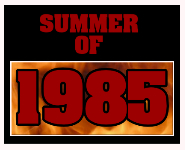 For me, enough time has passed to forgive any lacking in authenticity and enjoy these movies as time capsules of a time when exploitation filmmakers valiantly tried to straddle the zeitgeist, grab the horns of a movement they didn’t understand, and somehow wrestle it to the ground.
For me, enough time has passed to forgive any lacking in authenticity and enjoy these movies as time capsules of a time when exploitation filmmakers valiantly tried to straddle the zeitgeist, grab the horns of a movement they didn’t understand, and somehow wrestle it to the ground.
I must’ve known the word “rap” in ’85 – as in “a rap,” because everyone knew about “The Super Bowl Shuffle,” and I was obsessed with the Grandmaster Melle Mel song “Vice” from the Miami Vice soundtrack. But I also called it “breakdancing music.” I was learning. It might be for the best that I didn’t learn from RAPPIN’, a movie I didn’t know about back then even though it was from the same studio and director as BREAKIN’, and supposedly released as BREAKDANCE 3: ELECTRIC BOOGALEE somewhere, though I haven’t been able to find any advertising art to support that claim. (read the rest of this shit…)
Tags: Cannon Films, Eriq La Salle, hip hop, Ice-T, Joel Silberg, Kadeem Hardison, Mario Van Peebles, Pittsburgh, Summer of 1985
Posted in Music, Reviews | 12 Comments »
Monday, August 12th, 2019
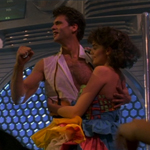 I’m into the early hiphopsploitation for many reasons: they’re a time capsule of an era and culture I’m fascinated by, they’re sometimes humorously dated or clueless about the subject, and they were what introduced me to that world, accurately depicted or otherwise. The BREAKIN’ movies were the big ones, but at the time I liked BEAT STREET better – it felt more authentic, and didn’t center on an outsider. Years later I discovered WILD STYLE (definitely the most legit one) and STYLE WARS (the documentary that seems to have inspired some of BEAT STREET), but also started to be much more enamored by the cartoonish world of Special K, Turbo and Ozone in the BREAKIN’s.
I’m into the early hiphopsploitation for many reasons: they’re a time capsule of an era and culture I’m fascinated by, they’re sometimes humorously dated or clueless about the subject, and they were what introduced me to that world, accurately depicted or otherwise. The BREAKIN’ movies were the big ones, but at the time I liked BEAT STREET better – it felt more authentic, and didn’t center on an outsider. Years later I discovered WILD STYLE (definitely the most legit one) and STYLE WARS (the documentary that seems to have inspired some of BEAT STREET), but also started to be much more enamored by the cartoonish world of Special K, Turbo and Ozone in the BREAKIN’s.
WILD STYLE was first, released in 1983. But check out the release schedule for ’84:
May 4: BREAKIN’
June 8: BEAT STREET
September 28: BODY ROCK
December 21: BREAKIN’ 2: WE ALREADY MADE A SEQUEL TO BREAKIN’
BODY ROCK – the one from New World Pictures – is the one I never knew about back then. It’s also by far the dumbest one. Therefore I have no choice but to recommend it. It stars Lorenzo Lamas (in the midst of Falcon Crest, five years before SNAKE EATER) as Chilly D, a… graffiti artist? He keeps saying he is, but we only see him helping with one subway car during the opening credits. He’s the founder and namer of the Body Rock Crew, his friends who breakdance, and he seems to be some kind of club promoter who introduces them when they dance at a place called Rhythm Nation. Then he stands on the side awkwardly doing a few moves. (read the rest of this shit…)
Tags: breakdancing, Cameron Dye, Chuck Russell, Desmond Nakano, Grace Zabriskie, hip hop, Joseph Whipp, Lorenzo Lamas, Michelle Nicastro, Ray Sharkey, Rene Elizondo, Robby Muller, Vicki Frederick
Posted in Music, Reviews | 12 Comments »
Monday, March 26th, 2018
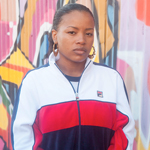 Do you guys know who Roxanne Shanté is? In the early days of hip hop, back when it was still pretty much just a New York thing, she was one of the greatest battle MCs. And she was also a 14-year old girl. Marley Marl, the producer behind Big Daddy Kane, Biz Markie, MC Shan, Kool G Rap, and others, was her neighbor in the Queensbridge housing projects. The way she tells it, one day when she was going to do her laundry he yelled down to her from his window to ask if it was true she could rap, and would she come up and record some rhymes for him. When he played her the beat that had been sampled in UTFO’s hit “Roxanne Roxanne,” she says she freestyled about being the Roxanne in the song. Ten minutes later she went back to the laundry and forgot all about it until her friend called and told her it was playing on the radio. And then it became a phenomenon.
Do you guys know who Roxanne Shanté is? In the early days of hip hop, back when it was still pretty much just a New York thing, she was one of the greatest battle MCs. And she was also a 14-year old girl. Marley Marl, the producer behind Big Daddy Kane, Biz Markie, MC Shan, Kool G Rap, and others, was her neighbor in the Queensbridge housing projects. The way she tells it, one day when she was going to do her laundry he yelled down to her from his window to ask if it was true she could rap, and would she come up and record some rhymes for him. When he played her the beat that had been sampled in UTFO’s hit “Roxanne Roxanne,” she says she freestyled about being the Roxanne in the song. Ten minutes later she went back to the laundry and forgot all about it until her friend called and told her it was playing on the radio. And then it became a phenomenon.
I never knew much about her or heard that story until she was on Ice-T’s podcast three years ago. I actually wonder if that interview gave writer/director Michael Larnell the idea to make a movie about her. Either way, a bunch of the details she mentioned to Ice ended up in the biopic ROXANNE ROXANNE, which played Sundance in January and was released direct to Netflix on Friday.
I think Shanté’s story is more natural for a movie than your usual superstar music biopic it was more neighborhood legend than media event. I know her voice and style and “Roxanne’s Revenge” and some of the responses it inspired from rival female MCs, like when UTFO came back with someone calling herself “The Real Roxanne” added to the payroll. But she’s not like Johnny Cash or someone where they’re wedded to depicting the creation of all the most famous songs and their climbs up the charts and a bunch of iconic moments that people would be mad if they skipped. And there’s not a bunch of footage we’ve all seen a million times and can’t help but compare it to. (read the rest of this shit…)
Tags: Adam Horovitz, Chante Adams, hip hop, Mahershala Ali, Michael Larnell, music biopic, Netflix, Nia Long, RZA
Posted in Drama, Music, Reviews | 6 Comments »
Wednesday, March 23rd, 2016
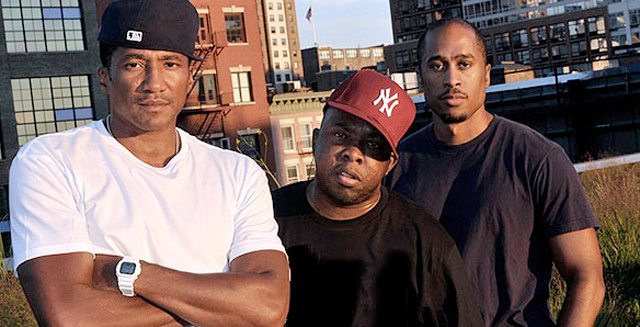
I have to say a few words about Phife Dawg of A Tribe Called Quest (pictured center), who died last night. Rolling Stone reports that it was due to complications of diabetes, which is what you’d expect of the MC who called himself “a funky diabetic” on the classic “Oh My God” and who several years ago received a kidney transplant. It was donated by his wife, as was touchingly depicted in Michael Rapaport’s documentary Beats, Rhymes and Life.
I have to agree with the conventional wisdom that A Tribe Called Quest is one of the best rap groups ever. There was a time in the ’90s when I started to resent them as the group that every white non-rap fan would say they liked, along with Beastie Boys. But eventually I had to admit to myself that those guys were right. I liked their first album, People’s Instinctive Travels and the Paths of Rhythm, which they made when they were teenagers and wearing to wear goofy costumes. The album holds up due to songs like “Bonita Applebum” and “Can I Kick It?” But it’s their second album, The Low End Theory, that makes them all-timers.
I still kinda remember the feeling of hearing it for the first time. It seemed so weird and stripped down compared to the complex samplescapes that I loved at the time. The sampling of some jazz basslines and horn riffs seemed very distinct and novel at the time, but the drums seemed so simple and raw. And that’s what still stands out to me today. As much as I love their voices and words, I am hypnotized by the drum. (read the rest of this shit…)
Tags: hip hop, obituaries
Posted in Blog Post (short for weblog) | 9 Comments »
 I don’t know much about Oakland, but FREAKY TALES seems designed to be the Oakland-est movie of all time. So Oakland that Too $hort is the narrator and one of the producers and has a cameo as a cop and is a character in the movie played by rapper Demario “Symba” Driver. Also they have a cool retro synth type score but they got Raphael Saadiq to do it.
I don’t know much about Oakland, but FREAKY TALES seems designed to be the Oakland-est movie of all time. So Oakland that Too $hort is the narrator and one of the producers and has a cameo as a cop and is a character in the movie played by rapper Demario “Symba” Driver. Also they have a cool retro synth type score but they got Raphael Saadiq to do it.

 It takes place in Memphis, where small time pimp and weed dealer DJay (Terrence Howard,
It takes place in Memphis, where small time pimp and weed dealer DJay (Terrence Howard,  A couple months ago I got on a Jean-Michel Basquiat kick. You probly know who that is, but if not, he was a New York City graffiti artist in the early hip hop era, transferred his skills to paintings for galleries, became rich and famous and friends with Andy Warhol and stuff in a brief, prolific life before (like so many bright lights) dying of a drug overdose at 27.
A couple months ago I got on a Jean-Michel Basquiat kick. You probly know who that is, but if not, he was a New York City graffiti artist in the early hip hop era, transferred his skills to paintings for galleries, became rich and famous and friends with Andy Warhol and stuff in a brief, prolific life before (like so many bright lights) dying of a drug overdose at 27.
 RICKY POWELL: THE INDIVIDUALIST is a 2020 documentary about the late New York City photographer/scenester who documented the golden age of hip hop and the ‘80s New York City art scene. Most of us know of him because of a line in a Beastie Boys song – he grew up with Ad Rock and went with them on their tours for around a decade, hanging out and taking photos. He also took many famous pictures of Run DMC, LL Cool J and Public Enemy.
RICKY POWELL: THE INDIVIDUALIST is a 2020 documentary about the late New York City photographer/scenester who documented the golden age of hip hop and the ‘80s New York City art scene. Most of us know of him because of a line in a Beastie Boys song – he grew up with Ad Rock and went with them on their tours for around a decade, hanging out and taking photos. He also took many famous pictures of Run DMC, LL Cool J and Public Enemy. “In the second film the wardrobe people wanted to go glamorous. And they wanted to make Los Angeles look beautiful – that’s why all the colors are bright and friendly. Los Angeles is not like that – they made BREAKIN’ 2 as some kind of a WIZARD OF OZ of dance. And you know what? For a kid that never had anything, not even the money in the family to go to Disneyland – suddenly people were screaming, and cheering, dancing and being happy on the screen. That’s the fantasy. Maybe Los Angeles will never be that way, but Los Angeles was beautiful for one day when people watched BREAKIN’ 2. I think that’s nice.” -Michael “Boogaloo Shrimp” Chambers to Marco Siedelmann in the book Stories From the Trenches: Adventures in Making High Octane Hollywood Movies With Cannon Veteran Sam Firstenberg
“In the second film the wardrobe people wanted to go glamorous. And they wanted to make Los Angeles look beautiful – that’s why all the colors are bright and friendly. Los Angeles is not like that – they made BREAKIN’ 2 as some kind of a WIZARD OF OZ of dance. And you know what? For a kid that never had anything, not even the money in the family to go to Disneyland – suddenly people were screaming, and cheering, dancing and being happy on the screen. That’s the fantasy. Maybe Los Angeles will never be that way, but Los Angeles was beautiful for one day when people watched BREAKIN’ 2. I think that’s nice.” -Michael “Boogaloo Shrimp” Chambers to Marco Siedelmann in the book Stories From the Trenches: Adventures in Making High Octane Hollywood Movies With Cannon Veteran Sam Firstenberg I’ve written about a bunch of these corny 21st century dance movies, and I always seem to be comparing them to the BREAKIN’ movies, but I’ve never actually reviewed the BREAKIN’ movies. That ends now. I’m reviewing the BREAKIN’ movies. The world could use more focus on the BREAKIN’ movies right now.
I’ve written about a bunch of these corny 21st century dance movies, and I always seem to be comparing them to the BREAKIN’ movies, but I’ve never actually reviewed the BREAKIN’ movies. That ends now. I’m reviewing the BREAKIN’ movies. The world could use more focus on the BREAKIN’ movies right now. May 10, 1985
May 10, 1985 For me, enough time has passed to forgive any lacking in authenticity and enjoy these movies as time capsules of a time when exploitation filmmakers valiantly tried to straddle the zeitgeist, grab the horns of a movement they didn’t understand, and somehow wrestle it to the ground.
For me, enough time has passed to forgive any lacking in authenticity and enjoy these movies as time capsules of a time when exploitation filmmakers valiantly tried to straddle the zeitgeist, grab the horns of a movement they didn’t understand, and somehow wrestle it to the ground. I’m into the early hiphopsploitation for many reasons: they’re a time capsule of an era and culture I’m fascinated by, they’re sometimes humorously dated or clueless about the subject, and they were what introduced me to that world, accurately depicted or otherwise. The BREAKIN’ movies were the big ones, but at the time I liked BEAT STREET better – it felt more authentic, and didn’t center on an outsider. Years later I discovered WILD STYLE (definitely the most legit one) and STYLE WARS (the documentary that seems to have inspired some of BEAT STREET), but also started to be much more enamored by the cartoonish world of Special K, Turbo and Ozone in the BREAKIN’s.
I’m into the early hiphopsploitation for many reasons: they’re a time capsule of an era and culture I’m fascinated by, they’re sometimes humorously dated or clueless about the subject, and they were what introduced me to that world, accurately depicted or otherwise. The BREAKIN’ movies were the big ones, but at the time I liked BEAT STREET better – it felt more authentic, and didn’t center on an outsider. Years later I discovered WILD STYLE (definitely the most legit one) and STYLE WARS (the documentary that seems to have inspired some of BEAT STREET), but also started to be much more enamored by the cartoonish world of Special K, Turbo and Ozone in the BREAKIN’s. Do you guys know who Roxanne Shanté is? In the early days of hip hop, back when it was still pretty much just a New York thing, she was one of the greatest battle MCs. And she was also a 14-year old girl. Marley Marl, the producer behind Big Daddy Kane, Biz Markie, MC Shan, Kool G Rap, and others, was her neighbor in the Queensbridge housing projects. The way she tells it, one day when she was going to do her laundry he yelled down to her from his window to ask if it was true she could rap, and would she come up and record some rhymes for him. When he played her the beat that had been sampled in UTFO’s hit “Roxanne Roxanne,” she says she freestyled about being the Roxanne in the song. Ten minutes later she went back to the laundry and forgot all about it until her friend called and told her it was playing on the radio. And then it became a phenomenon.
Do you guys know who Roxanne Shanté is? In the early days of hip hop, back when it was still pretty much just a New York thing, she was one of the greatest battle MCs. And she was also a 14-year old girl. Marley Marl, the producer behind Big Daddy Kane, Biz Markie, MC Shan, Kool G Rap, and others, was her neighbor in the Queensbridge housing projects. The way she tells it, one day when she was going to do her laundry he yelled down to her from his window to ask if it was true she could rap, and would she come up and record some rhymes for him. When he played her the beat that had been sampled in UTFO’s hit “Roxanne Roxanne,” she says she freestyled about being the Roxanne in the song. Ten minutes later she went back to the laundry and forgot all about it until her friend called and told her it was playing on the radio. And then it became a phenomenon.
























